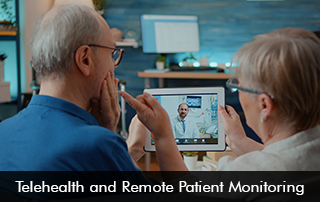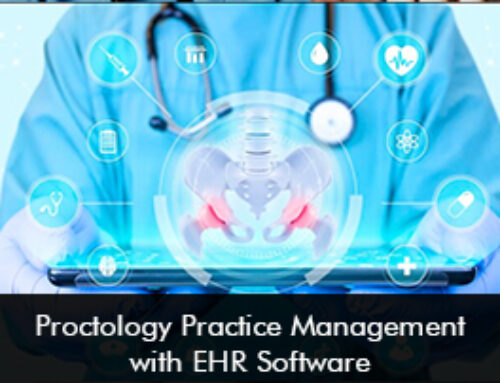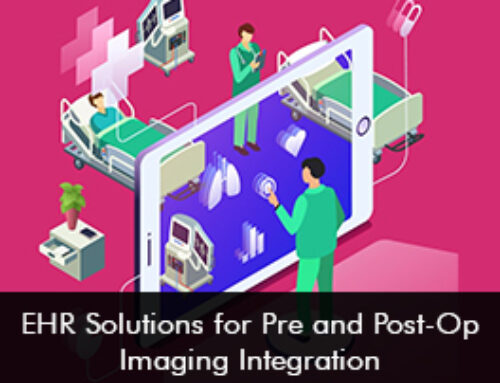Significant changes to the healthcare sector have been brought about by the quick development of technology. One significant breakthrough is the introduction of telehealth and remote patient monitoring, which have completely changed how healthcare services are provided. Remote patient monitoring, sometimes known as telehealth, is the practice of providing medical care remotely via digital communication means, while telehealth refers to the typical healthcare settings.
The advantages and difficulties of telehealth and remote patient monitoring will be discussed in this blog.
Benefits of Telehealth and Remote Patient Monitoring
- Increased Access to Healthcare
- Enhanced Convenience and Efficiency
- Cost Savings
- Continuity of Care
- Improved Patient Engagement and Satisfaction
Challenges of Telehealth and Remote Patient Monitoring
- Technological Barriers
- Data Security and Privacy Concerns
- Limited Physical Examination
- Unequal Access and Health Disparities
- Regulatory and Reimbursement Policies
Benefits of Telehealth and Remote Patient Monitoring
Increased Access to Healthcare:
Telehealth makes it possible for people to easily obtain healthcare services, especially those who live in rural or under-served locations. Because they may interact with them through virtual consultations, patients no longer need to travel great distances to see a healthcare professional. By encouraging early action, this accessibility lowers the possibility of problems and enhances patient outcomes.
Enhanced Convenience and Efficiency:
Telehealth makes in-person visits unnecessary, saving patients significant time and energy. Through remote consultations, patients can receive medical advice and medications while relaxing in their own homes. Additionally, healthcare professionals can see more patients in less time, increasing their overall efficiency.
Cost Savings:
Both patients’ and providers’ healthcare expenditures can be greatly decreased with telehealth. Due to the absence of travel, parking, and waiting room costs, virtual consultations are frequently more economical than in-person ones. By regularly monitoring patients’ illnesses, remote patient monitoring can also reduce the need for emergency department visits and hospital re-admissions, saving the healthcare system money.
Continuity of Care:
Patients with chronic diseases can receive ongoing monitoring and follow-up care thanks to telehealth and remote patient monitoring. Health care providers may discover patterns, spot anomalies, and take immediate action when needed with the support of routine data collection and analysis. This proactive strategy improves disease management, decreases hospitalizations, and improves patient care.
Improved Patient Engagement and Satisfaction:
The use of telehealth technologies enables people to actively participate in their treatment. Patients may follow progress, manage prescriptions, and make educated decisions thanks to real-time access to their health data provided via remote monitoring devices and telemedicine platforms. Increasing patient satisfaction and treatment plan adherence are frequently results of this greater engagement.
Challenges of Telehealth and Remote Patient Monitoring
Technological Barriers:
Access to dependable internet connectivity and the necessary technological infrastructure are crucial for the widespread adoption of telehealth and remote patient monitoring. Implementing these solutions can be difficult in places with a lack of internet connectivity or obsolete technology. In addition, when adjusting to new technologies, there could be a learning curve for both patients and healthcare professionals.
Data Security and Privacy Concerns:
Sensitive patient data is transmitted via telecommunication networks and stored there. It is essential to guarantee the privacy and security of sensitive data. To protect patient information from unwanted access or breaches, healthcare companies must establish strong security measures, such as encrypted communication routes and secure storage systems.
Limited Physical Examination:
While telehealth has numerous advantages over in-person consultations, it also has certain drawbacks. Remote consultations might not allow for thorough physical tests, including palpation or auscultation, which in some circumstances can be essential for a precise diagnosis. Healthcare professionals need to carefully evaluate when a physical examination is required and choose the best course of action.
Unequal Access and Health Disparities:
Despite the possibility of greater accessibility, differences in internet access, digital literacy, and technological resources may prevent some communities from taking advantage of telehealth and remote patient monitoring. To close these inequalities and guarantee that everyone has fair access to healthcare services, efforts must be made.
Regulatory and Reimbursement Policies:
Appropriate legal frameworks and reimbursement regulations are necessary for the adoption of telehealth and remote patient monitoring. Healthcare professionals and organizations trying to incorporate these technologies into their practice frequently face difficulties due to the fact that these regulations change across different geographic areas and healthcare systems. To encourage widespread usage, it is necessary to have clear guidelines and suitable payment systems in place.
By expanding access, enhancing convenience, and improving patient outcomes, telehealth and remote patient monitoring have the potential to revolutionize the way healthcare is delivered. Although there are obstacles to overcome, these technologies offer a wide range of advantages. Healthcare systems can use telehealth and remote patient monitoring to provide effective, patient-centered care in the digital age by addressing the technological, privacy, and accessibility challenges.







